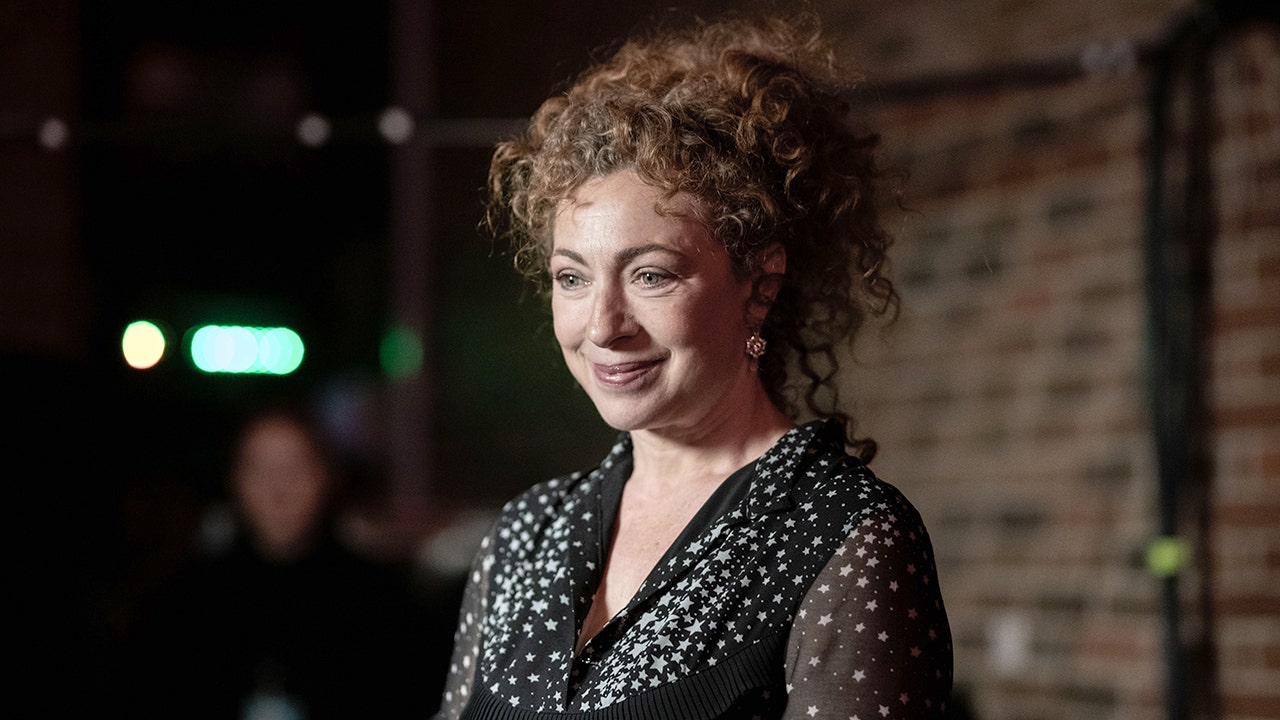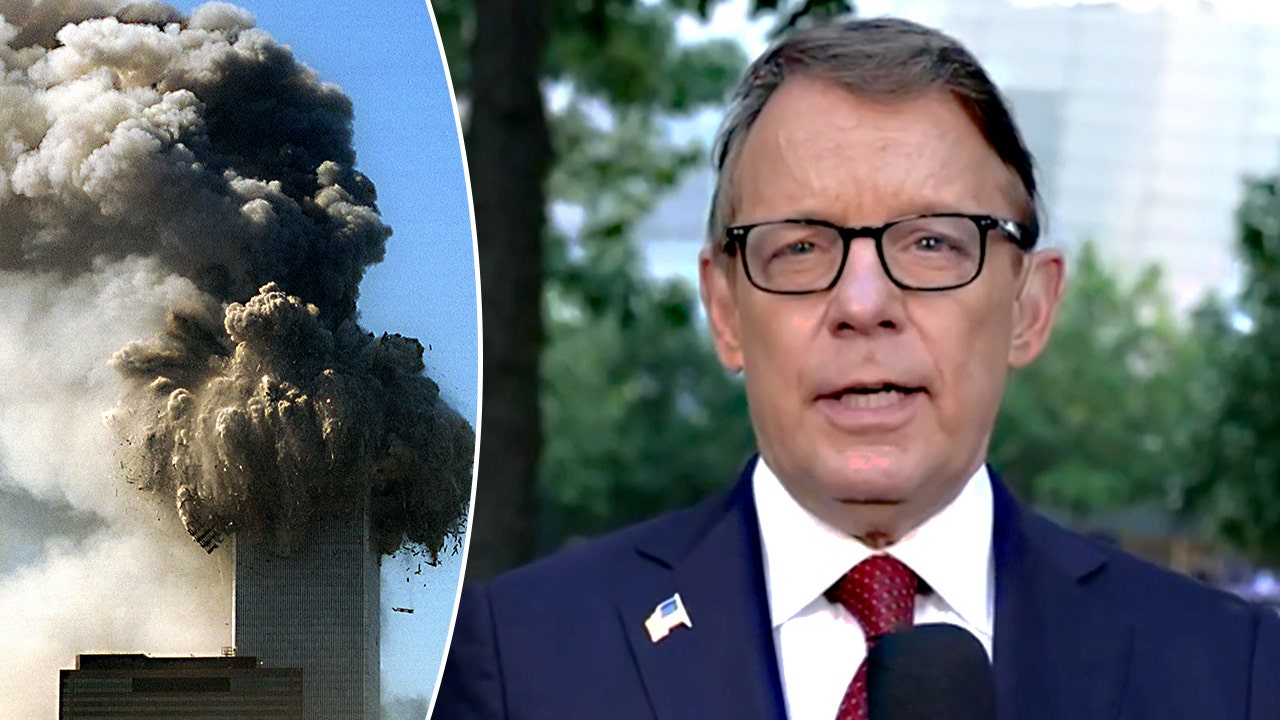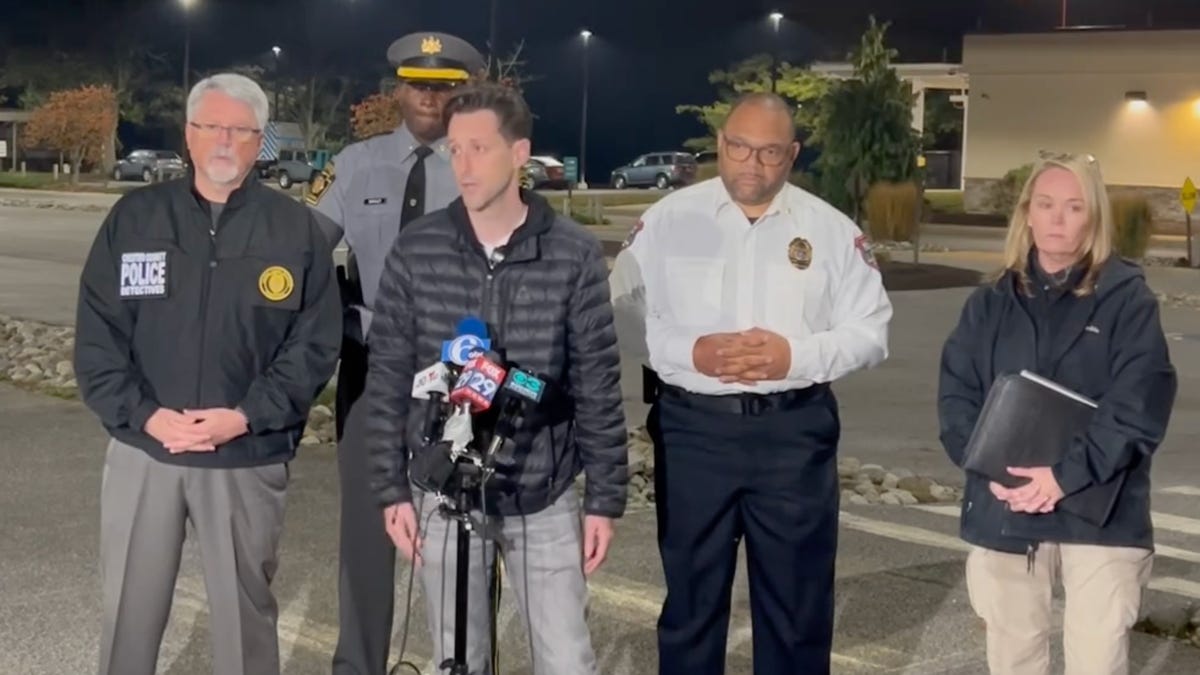Nebraska
‘It’s a story of hope’: UNMC pancreatic cancer survivor reflects, five years after diagnosis | Nebraska Examiner

LINCOLN — A survivor of pancreatic cancer says hope, care at the University of Nebraska Medical Center and a strong support team saved his life five years after his diagnosis.
In early 2018, Kiim Bate of Lincoln developed a rash that was soon diagnosed as shingles. Later, his family doctor said Bate likely had cancer somewhere in his body. Multiple scans and biopsies were either negative or undetermined, until a call that September provided an answer.
“The biopsy was wrong, and it is cancer,” Bate recalls his doctor saying. “It’s pancreatic cancer, and it’s an aggressive one.”
Bate scheduled local robotic surgery for his pancreas, a six-inch gland in the abdomen that produces digestive enzymes and insulin. However, a push by family — particularly a nephew who is a doctor in Neligh, Nebraska — encouraged Bate to instead choose the University of Nebraska Medical Center.
“If you don’t go, I’m going to come and get you and take you,” he said his nephew told him.
‘New lease on life’
Dr. Luciano Vargas, Bate’s doctor at UNMC, affirmed his family’s concerns and said his patient needed eyeballs on the cancer, not a camera.
Within seven to 10 days, Bate said, he went through major surgery, which included removing a third of his pancreas along with 23 lymph nodes and his spleen. His cancer, at Stage 2B, had been caught early.
After the surgery, Bate underwent chemotherapy every two weeks for about six months.
“When you think about pancreatic cancer, we’re talking days, it changes. It’s quick,” Bate said. “And so every day is something that you just can’t waste.”

Dr. Kelsey Klute, a UNMC oncologist on Bate’s care team, said UNMC has kept an eye on Bate for five years.
“You can tell he just really feels like he has a new lease on life,” Klute said of Bate. “And to some degree, he actually does.”
‘Not playing by the rules’
Pancreatic cancer differs from other types of solid tumors, particularly because it doesn’t play by any rules or principles of solid tumors.
“Some of the basic, fundamental principles of cancer biology that we learn are not only not obeyed, they’re actually flipped upside down,” said Dr. Sunil Hingorani, director of UNMC’s Pancreatic Cancer Center of Excellence in the Fred & Pamela Buffett Cancer Center.
Pancreatic cancer is nearly impossible to detect early and is “incredibly insidious” in leading physicians away from diagnosis when symptoms are present, Hingorani said.
Pancreatic cancer also decreases the blood it takes in, rather than stimulating the growth of new blood vessels to grow its blood supply, as other cancers do.
“It isolates itself from the system and, in a way then, provides the first line of its defense against whatever we might introduce in the bloodstream,” Hingorani said.
Any toxins introduced in the bloodstream could impact other organs, Hingorani said, which is a resistance outsizing other solid tumors. In addition, the cancer violates a common vocabulary of cancer staging, from Stages 1 to 4, that surgeons use.
Generally, staging guides surgeons through “windows of opportunity” on when they should intervene, such as always cutting with Stage 1 or 2 cancer or never cutting at Stage 4. At Stage 3, “Think about it.”

Yet, Hingorani said, a clinical Stage 1 pancreatic tumor may simultaneously be a microscopic Stage 4 cancer that has already spread to other parts of the body.
“That’s not playing by the rules,” Hingorani said.
Reason for optimism
The disease is highly lethal, Dr. Klute said, but added it is important to maintain hope.
“I always try to remind people you are not a statistic,” Klute said. “You are one person, and there are people who beat this, and there’s no reason you can’t be one of them.”
That optimism applies to the disease’s future, which Hingorani said will include further understanding of the differences he outlined, which could inform what drugs or delivery systems work best to target the KRAS oncogene that drives pancreatic cancer.
“Now, the ballgame is different,” Hingorani said, which will lead to a discovery of what “leads to catastrophe” for the cancer.
Everything that comes after that is about settling a score. It’s about personal redemption and a vendetta, and I always put that out on the table up front.
– Dr. Sunil Hingorani, director of UNMC’s Pancreatic Cancer Center of Excellence in the Fred & Pamela Buffett Cancer Center
Family history
In 2017, the year before Bate’s diagnosis, his sister had been sick over the summer, yet doctors couldn’t figure out what was wrong. It wasn’t until that October that she was diagnosed with Stage 4 cancer and died about two weeks later.
Bate’s twin had also been suspected to have pancreatic cancer in 2018 and got a biopsy but died a couple of days later due to complications with the procedure.
Bate recalled hearing the word “cancer” when he was younger and soon after hearing “funeral.”
“There was no hope,” Bate said.

Bate, now 66, said he’ll spend his next minutes on gratefulness, something he learned through his life after leaving Kansas City slums and moving to Hastings in 1974. While some thought the move was for college, it was to follow a girl, his eventual wife of 47 years.
He graduated from Hastings College with a degree in human services but was self-employed for the better part of 40 years, including doing lawn work, small engine repair, working with wind and solar power and converting gasoline vehicles to all-electric.
“We did whatever we had to do to make a living,” Bate said.
Bate worked 70 to 80 hours a week and had never thought he’d quit working full time. But “the body’s forever changed” after his cancer treatment. During his recovery, he at one point got out a piece of paper for a “little pity party” and wrote down all the things he wasn’t going to be able to do.
“I got a couple, two, maybe three or four things on the list and I thought, ‘Kim, you dumbass, turn that page over and write down all the things you’re going to do,’” Bate said. “Never looked at the other side since. Not going to.”
I will not live in fear of this cancer coming back. I won’t let it take a minute from me, not one moment. Can’t.
‘Hope fuels recovery’
Instead, Bate has focused on the bright side and has allowed hope, family and faith to uplift him.
“Hope fuels recovery,” he said. “You don’t get better if you don’t hope, and you don’t get better if you don’t think there’s a chance.”
Bate’s wife, Nancy, described the recovery as “kind of a roller coaster,” though better than expected.
“It was one of those — you didn’t really have a choice, you just muddle through and do the best that we could,” she said.
While the Bates said it was difficult at the time to work with insurance — Kim Bate said this is a point where lawmakers can apply pressure for more early detection — they’re thankful for the outcome.
The couple’s son, Patrick, and daughter, Ella, also aided in the journey. Patrick said that through many ups and downs, Bate’s persistence and stubbornness paid off.
“He grew a lot,” Patrick Bate said of his father.
‘I will not live in fear’
Much of the hope came out of a sense of respect for those rooting for him. This includes some 100,000 people, Bate said, who raised his name in prayer on any given Sunday as part of a nationwide prayer list started out of a little church in Kansas City.

Bate is now a full-time student at Wartburg Theological Seminary, taking courses online and in person. Every Sunday, he serves in a small Lutheran church in Palmyra, Nebraska, about 20 miles from Lincoln, which he described as “another step” in his faith journey.
“If I don’t honor all that they did to help me, then I’m the one that’s dropping the ball,” Bate said.
He said one of his heroes is Robin Roberts, a “Good Morning America” anchor on ABC who is a survivor of breast cancer and myelodysplastic syndrome, a rare blood disorder that affects bone marrow. On days when he got really sick, Bate said, he’d watch GMA and see Roberts as a cancer thriver, not just a survivor.
“She may never know what she did for me in my life. But where did I get my hope?” Bate said. “That’s one of my places.”
Some people in remission worry about the cancer returning, Bate added, but not him. If he did, he said, the cancer would win again.
“I will not live in fear of this cancer coming back,” Bate said. “I won’t let it take a minute from me, not one moment. Can’t.”
‘Settling a score’
Hingorani, as the lead of UNMC’s pancreatic cancer division, said simply he didn’t choose pancreatic cancer as a specialty — it chose him.
In 1998, Hingorani said, he was studying the KRAS oncogene that drives pancreatic cancer, in the context of lung cancer, when his father was diagnosed with metastatic pancreatic cancer. At the time, there was “essentially nothing” to treat it, from a chemotherapeutic standpoint.
As one of his first patients as an attending physician, Hingorani said, his father lived about 10 or 11 months after his diagnosis — longer than Hingorani’s mentors thought he would.
Hingorani said the fact he couldn’t save his father is “still the biggest failure of my life, frankly.”
“Everything that comes after that is about settling a score,” Hingorani said. “It’s about personal redemption and a vendetta, and I always put that out on the table up front.”
‘Hotline to a total embrace’
That experience also taught Hingorani how health care was set up for the convenience of the provider instead of for patients, who were expected to make individual appointments with a number of specialists. Now, with a vengeance, UNMC has changed the game.
Christina Hoy, clinical program director and a nurse practitioner, said whenever a prospective patient calls, she operates something of a five-alarm fire.
“Everything” is set in motion, including four medical oncologists who focus on pancreas cancer, five surgeons who specialize in operating on the pancreas and others at UNMC ranging from nutritionists and social workers to spiritual care, clinical research and financial counselors.

“Every week, there’s 40-plus people who come together to review cases, and we comb through — in detail — every scan on the big screen … and we go around the room, through each discipline, and challenge each other to come up with the best place of care for each individual patient,” Hoy said.
Tony Hollingsworth, a UNMC professor who has researched pancreatic cancer since 1985, said the team frequently rules things out and moves on quickly, with the patient in mind.
Hingorani said the center telephone number is 1-844-CUR-PANC, a “one-stop-shopping experience” and a “hotline to a total embrace of the patient.”
“This is a place I wish I could have brought my father to,” Hingorani said of UNMC. “This is the place you want to bring your loved one to if you want them to get the best shot at longevity. It’s as simple as that.”
‘The sound of hope’
Bate said more public awareness is needed about pancreatic cancer because neither his sister nor he thought or worried about the cancer before, and he didn’t even know the function of the pancreas.
“It’s a story of hope,” Bate said.
After a patient’s last round of chemo, there is a bell that patients ring. Bate said that bell represents what is offered through his treatment.
“I cheat,” Bate said with a laugh. “Every time I get a clear bill of health, I smack that bell. I don’t just go and give it a little tap — it rings out. And when I hit that bell, I wait for it to echo down, and then I say loudly, ‘That is the sound of hope.’”

Nebraska
Nebraska Has a Path to the College Football Playoff
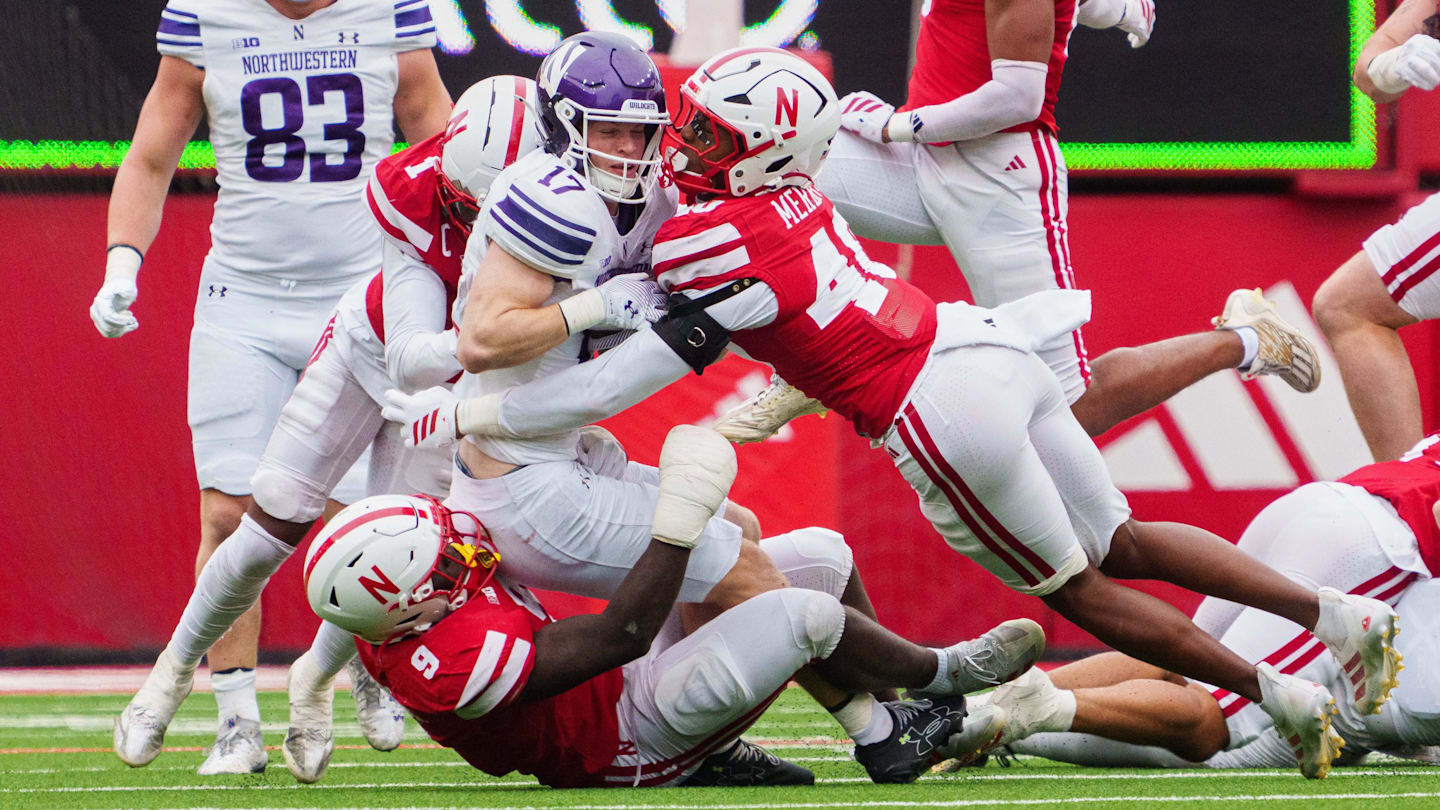
If conventional wisdom about the College Football Playoff rings true, Nebraska has a path to being one of the 12 teams selected.
Not a guaranteed path, but a path.
Not an easy path, but a path.
The Huskers’ playoff hopes only exist with a victory Saturday night against visiting USC. If they don’t beat the Trojans, it’s time to check out what bowl game might be possible.
Conventional wisdom suggests the Big Ten and SEC each will have four teams in the CFP. The Big Ten had four teams in last year’s 12-team tournament. The SEC had three teams.
But there’s no guarantee of four B1G or SEC teams, that’s just the talk.
Ohio State and Indiana are locks for the CFP and Oregon might be, too. If a fourth team is in play, intrigue takes over with many possibilities and probably one slot.
Nebraska, obviously, has to win out. Going 3-1 over the final four games won’t cut it. The Huskers also need help, maybe lots of help. There are four one-loss teams ahead of the Huskers (3-2, 6-2) in the Big Ten standings. Nebraska is one of five two-loss teams, but realistically only the Huskers and Washington still are alive.
So, there is a glimmer of hope for Nebraska.
Each one-loss team and each two-loss team has season-defining games remaining that will change the standings, and could change the perceptions and minds of the CFP Selection Committee. Some teams have two such difficult games remaining.
In a wild season where Vanderbilt and Georgia Tech control their fate and could get into the CFP, and preseason No. 1 Penn State (3-4) and preseason top 5 Clemson (3-4) might not even become bowl eligible, no one knows what’s going to happen on the field.
* Oregon (4-1 B1G, 7-1 overall): Unless they collapse down the stretch, the Ducks are in.
* Michigan (4-1, 6-2): This might be the most problematic team for Nebraska, which lost to the Wolverines in September. Michigan closes the season at home against undefeated, No. 1 Ohio State. OK, that feels like a Wolverines loss, but they have defeated the Buckeyes the last four years. But if Michigan beats Ohio State again, presuming they beat Purdue and Maryland along the way, the Wolverines almost certainly will get a playoff spot.
* USC (3-1, 5-2): Nebraska can leap over the Trojans on Saturday night at Memorial Stadium. Period.
* Iowa (4-1, 6-2): The Huskers play host to the Hawkeyes on Nov. 28. First, Iowa plays host to Oregon on Saturday, and is at USC on Nov. 15. Not easy.
* Washington (3-2, 6-2): The Huskies play wildly unpredictable UCLA on the road on Nov. 22, then close the season at home vs. Oregon on Nov. 29. Washington was in the national title game only two years ago.
* Minnesota (3-2, 5-3): Nebraska’s loss at Minnesota was damaging and might wind up being disqualifying. But the Golden Gophers have three losses overall, and they play at Oregon on Nov. 14.
* UCLA (3-2, 3-5): The Bruins have five overall losses, so they’re done. The CFP Selection Committee might have to stomach a three-loss team this year, but that’s the maximum number of losses that will get in — if that.
* Northwestern (3-2, 5-3): Nebraska’s 28-21 victory on Saturday ended the Wildcats’ long-shot hopes for a CFP berth.
Nebraska’s schedule actually helps, with USC and Iowa coming to Memorial Stadium. Say the Huskers win out and finish 10-2 — somewhat of a tall task many would say. Would a 10-2 Huskers team get in ahead of a 9-3 Michigan team that lost at home to No. 1 Ohio State but beat Nebraska head-to-head? It’s not an impossible scenario.
Nebraska hasn’t helped itself with uneven performances. Yes, wins are wins and the Huskers should feel good about having six of them. And their win over Cincinnati looks better and better. But teams now are trying to persuade the CFP Selection Committee that they are worthy.
Right now, Nebraska doesn’t have that one significant win. The kind of win that makes the committee sit up and take notice and take notes. With so many teams crunched together, who knows what the difference is between getting in and not getting in.
And Nebraska’s signature win could be out there with USC, UCLA, Penn State and Iowa on its schedule. A bunch of one-score wins certainly helps the ledger but how much influence does a 28-21 win over Northwestern have on the committee?
But a Nebraska victory over USC, on NBC Saturday night, might have outsized influence with the committee. Beat the Trojans on national television in prime time and people will notice.
The first CFP poll will be released on Tuesday, Nov. 4 at 7 p.m. CT. Plenty of information will be dissected from the first poll. How significant that poll is for Nebraska will depend on one factor: Did the Huskers defeat USC on Nov. 1?
Right now, for Nebraska, nothing else matters.
Stay up to date on all things Huskers by bookmarking Nebraska Cornhuskers On SI, subscribing to HuskerMax on YouTube, and visiting HuskerMax.com daily.
Nebraska
Nebraska Downs Michigan State in a Familiar Fashion
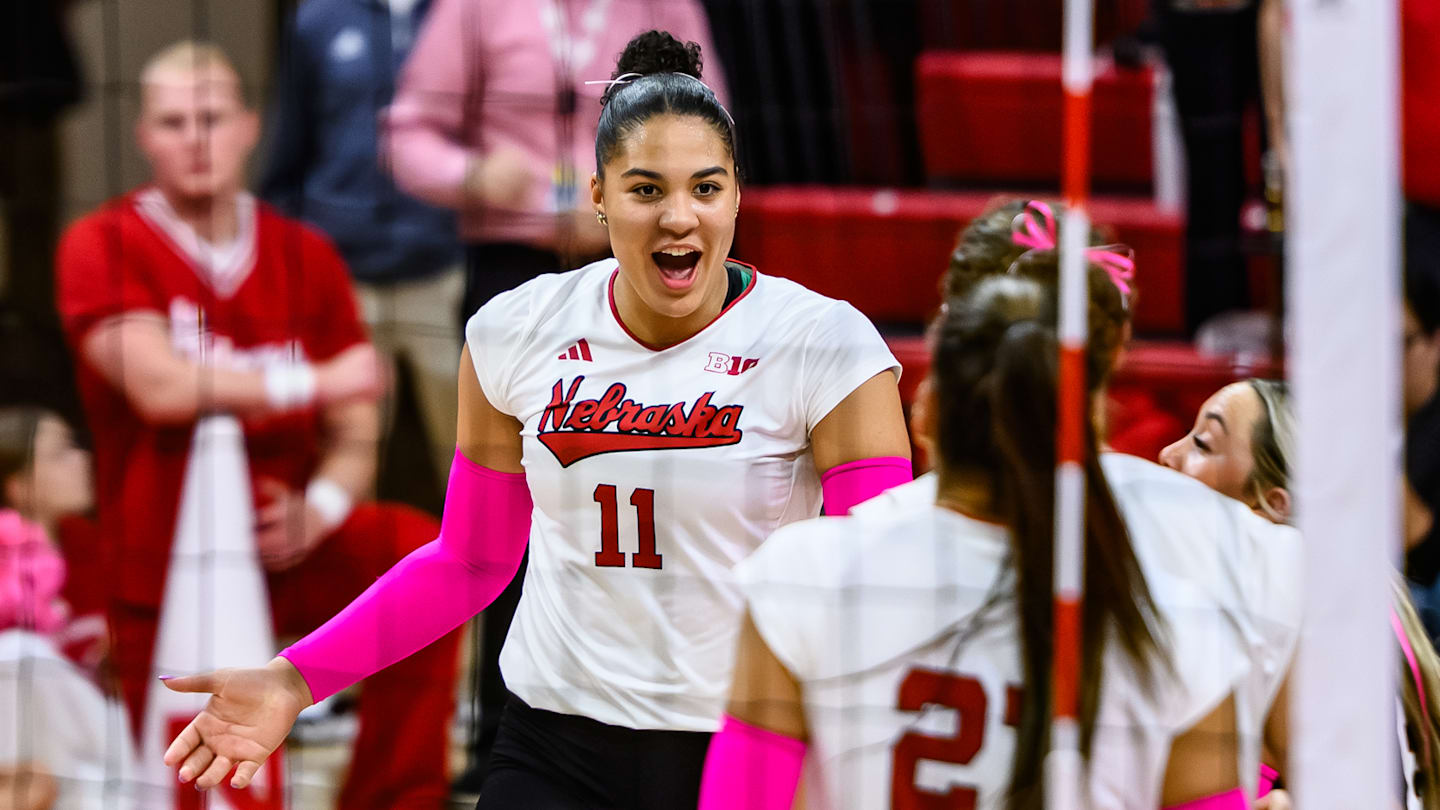
LINCOLN—Copy and paste—same story, different opponent.
It was another sweep for top-ranked Nebraska — it’s 11th in a row as it hit .382 for the match while limiting Michigan State to .118.
The Huskers did not allow an opponent to reach 20 points again, a feat that had happened just five times during the sweep streak. In the last 33 sets, teams are averaging 16.3 points per set against the Huskers.
For the third straight match, no Nebraska player reached double-digit kills as freshman outside hitter Teraya Sigler finished with a match-high nine kills.
Not that the Huskers (20-0, 10-0) would complain since all the streaks are positive in their favor. NU earned a 25-15, 25-15, 25-18 straight set win over the Spartans Saturday evening at John Cook Arena in front of 8,496 fans.
NU coach Dani Busboom Kelly said they have a lot of weapons and depth, which gives the Huskers a lot of options to attack and depth to cover players when they might not be on for a match.
After Sigler, Rebekah Allick and Harper Murray finished with eight kills, while Virginia Adriano and Andi Jackson put up seven kills.
“Nebraska has always been great defensively and sometimes hasn’t put up offensive numbers,’ she said. “This year, we’re really putting up really high offensive numbers as well. It’s just the attention to detail and the awareness that we’re going to be great on both sides. We’re not going to rely on one or the other to win games.”
Bergen Reilly tallied 37 assists against Michigan State and passed Lauren Cook for fourth all-time on Nebraska’s career assist list. The junior setter now has 3,225 assists in her career, while Cook finished with 3,198. Next up on the all-time chart is Sydney Anderson in third place with 3,332 career assists.
Against Michigan State (15-5, 5-5), the NU freshman took center stage. Senior outside hitter Taylor Landfair was available, according to Busboom Kelly, after spraining her ankle on Friday night, but Sigler played all six rotations for most of the match while giving way to redshirt freshman Skyler Pierce in the late second and third sets.
Adriano started the match with some noise, recording kills on the first two rallies. The Turin, Italy native finished with seven kills on nine swings with a career-best hitting percentage of .667. She gave way to senior opposite Allie Sczech in the third set, who terminated on all three of her swings.
Even though the pair compete for playing time at the same position, Adriano said Sczech has been a great resource in helping her adapt to the American game and become a better player. She said she is proud when Sczech plays well in her opportunities.
“We push each other a lot in practice, so that helps when struggle (against other teams) is going to come, hopefully it won’t, but I think it will,” Adriano said about Sczech. “When that’s going to happen, we are going to be prepared for that by helping each other in practice.”
— Nebraska Volleyball (@HuskerVB) October 26, 2025
Michigan State kept it close as the Huskers led 11-10 midway through the second set. Murray served during a 4-0 run, and then Maisie Boesiger was at the service line for a 6-0 run as NU pulled away. Allick provided the offensive firepower as she recorded seven kills on 11 swings in the set.
The Spartans’ offense was led by seven kills from Biance Mumcular and Zuzanna Kulig. Nebraska won the blocking battle 11-9 as Reilly and Jackson finished with five stuffs. In an odd quirk, neither team recorded an ace in the match.
For the second straight match, Manaia Ogbechie came on in relief in the third set and put up impressive numbers. On Friday, the 6-foot-3 middle blocker recorded four kills on eight swings for a .375 hitting percentage versus Northwestern. Against the Spartans, Ogbechie finished with five kills on six attacks and added a block.
While Ogbechie didn’t know she was going to play until after the second set was over, she quickly got ready and made an instant impact.
Even though she is experiencing college volleyball for the first time, she said she leans on her teammates to help her get used to the success the Huskers are experiencing.
“It does get a little bit old, but being able to even participate in the third set, for me, that’s more than fulfilling,” Ogbechie said.
Stay up to date on all things Huskers by bookmarking Nebraska Cornhuskers On SI, subscribing to HuskerMax on YouTube, and visiting HuskerMax.com daily.
Nebraska
Nebraska Lottery results: See winning numbers for Pick 3, Pick 5 on Oct. 23, 2025
The Nebraska Lottery offers several draw games for those aiming to win big.
Lottery players in Nebraska can choose from popular national games like the Powerball and Mega Millions, which are available in the vast majority of states. Other games include Lotto America, Lucky For Life, Pick 3, Pick 5, MyDaY and 2 by 2.
Big lottery wins around the U.S. include a lucky lottery ticketholder in California who won a $1.27 billion Mega Millions jackpot in December 2024. See more big winners here. And if you do end up cashing a jackpot, here’s what experts say to do first.
Here’s a look at Thursday, Oct. 23, 2025 results for each game:
Winning Pick 3 numbers from Oct. 23 drawing
9-7-8
Check Pick 3 payouts and previous drawings here.
Winning Pick 5 numbers from Oct. 23 drawing
02-08-24-26-33
Check Pick 5 payouts and previous drawings here.
Winning 2 By 2 numbers from Oct. 23 drawing
Red Balls: 08-24, White Balls: 07-23
Check 2 By 2 payouts and previous drawings here.
Winning Lucky For Life numbers from Oct. 23 drawing
12-30-33-39-40, Lucky Ball: 03
Check Lucky For Life payouts and previous drawings here.
Winning MyDay numbers from Oct. 23 drawing
Month: 05, Day: 05, Year: 80
Check MyDay payouts and previous drawings here.
Feeling lucky? Explore the latest lottery news & results
When are the Nebraska Lottery drawings held?
- Powerball: 9:59 p.m. CT Monday, Wednesday and Saturday.
- Mega Millions: 10 p.m. CT on Tuesday and Friday.
- Pick 3, 5: By 10 p.m. CT daily.
- Lucky For Life: 9:38 p.m. CT daily.
- 2 By 2: By 10 p.m. CT daily.
- MyDaY: By 10 p.m. CT daily.
- Lotto America: 9:15 p.m CT Monday, Wednesday and Saturday.
Winning lottery numbers are sponsored by Jackpocket, the official digital lottery courier of the USA TODAY Network.
Where can you buy lottery tickets?
Tickets can be purchased in person at gas stations, convenience stores and grocery stores. Some airport terminals may also sell lottery tickets.
You can also order tickets online through Jackpocket, the official digital lottery courier of the USA TODAY Network, in these U.S. states and territories: Arizona, Arkansas, Colorado, Idaho, Maine, Massachusetts, Minnesota, Montana, Nebraska, New Hampshire, New Jersey, New York, Ohio, Oregon, Puerto Rico, Washington D.C., and West Virginia. The Jackpocket app allows you to pick your lottery game and numbers, place your order, see your ticket and collect your winnings all using your phone or home computer.
Jackpocket is the official digital lottery courier of the USA TODAY Network. Gannett may earn revenue for audience referrals to Jackpocket services. GAMBLING PROBLEM? CALL 1-800-GAMBLER, Call 877-8-HOPENY/text HOPENY (467369) (NY). 18+ (19+ in NE, 21+ in AZ). Physically present where Jackpocket operates. Jackpocket is not affiliated with any State Lottery. Eligibility Restrictions apply. Void where prohibited. Terms: jackpocket.com/tos.
This results page was generated automatically using information from TinBu and a template written and reviewed by a USA Today editor. You can send feedback using this form.
-

 New York3 days ago
New York3 days agoVideo: How Mamdani Has Evolved in the Mayoral Race
-

 World6 days ago
World6 days agoIsrael continues deadly Gaza truce breaches as US seeks to strengthen deal
-

 News5 days ago
News5 days agoVideo: Federal Agents Detain Man During New York City Raid
-

 News6 days ago
News6 days agoBooks about race and gender to be returned to school libraries on some military bases
-

 Technology6 days ago
Technology6 days agoAI girlfriend apps leak millions of private chats
-

 Politics6 days ago
Politics6 days agoTrump admin on pace to shatter deportation record by end of first year: ‘Just the beginning’
-

 News6 days ago
News6 days agoTrump news at a glance: president can send national guard to Portland, for now
-

 Business6 days ago
Business6 days agoUnionized baristas want Olympics to drop Starbucks as its ‘official coffee partner’

